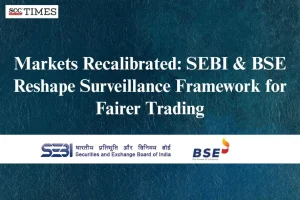On 25-7-2025, the Bombay Stock Exchange (‘BSE’) in consultation with the Securities and Exchange Board of India (‘SEBI’) notified a ‘Revision of Enhanced Surveillance Measure (‘ESM’)’ framework reflects SEBI’s ongoing commitment to maintaining transparency and investor confidence and to regulate trading in small-cap and micro-cap stocks. These provisions of this Notification came into effect on 28-7-2025.
Key takeaways:
- In a joint surveillance meeting, SEBI and BSE designed a new framework that refines and elevate the surveillance architecture in India’s equity markets.
- This revised framework is aimed at protecting retail investors from risks associated with speculative trading particularly in small-cap and micro-cap stocks, to filter out potentially volatile companies through a more sophisticated and fair set of parameters.
- A core agenda of the update is minimizing collateral damage to fundamentally robust companies, ensuring that surveillance mechanisms do not hinder legitimate growth stories.
- Under the revised criteria, securities will be considered for inclusion in ESM based on either high—low price variation or close-to-close price variation over 3, 6, or 12 months, whichever meets one standard deviation above the market norm for companies with a market cap under ₹1000 crore.
- Securities are expected to show positive momentum over the last three months to be flagged. Stocks with derivative products will now be excluded from the ESM screening.
- BSE clarified that inclusion under the ESM does not constitute a punitive action or suggest irregularities on the part of the company. It serves as a preventive mechanism to ensure orderly trading and safeguard investor interests.
- While the two-stage surveillance approach remains intact, the entry thresholds have been revised, resulting in more targeted interventions and reducing unnecessary disruptions.
- By clearly reiterating and refining these entry filters, the framework aligns surveillance action with real-time market behaviour, making oversight smarter, proportionate, and more adaptable to evolving conditions.

